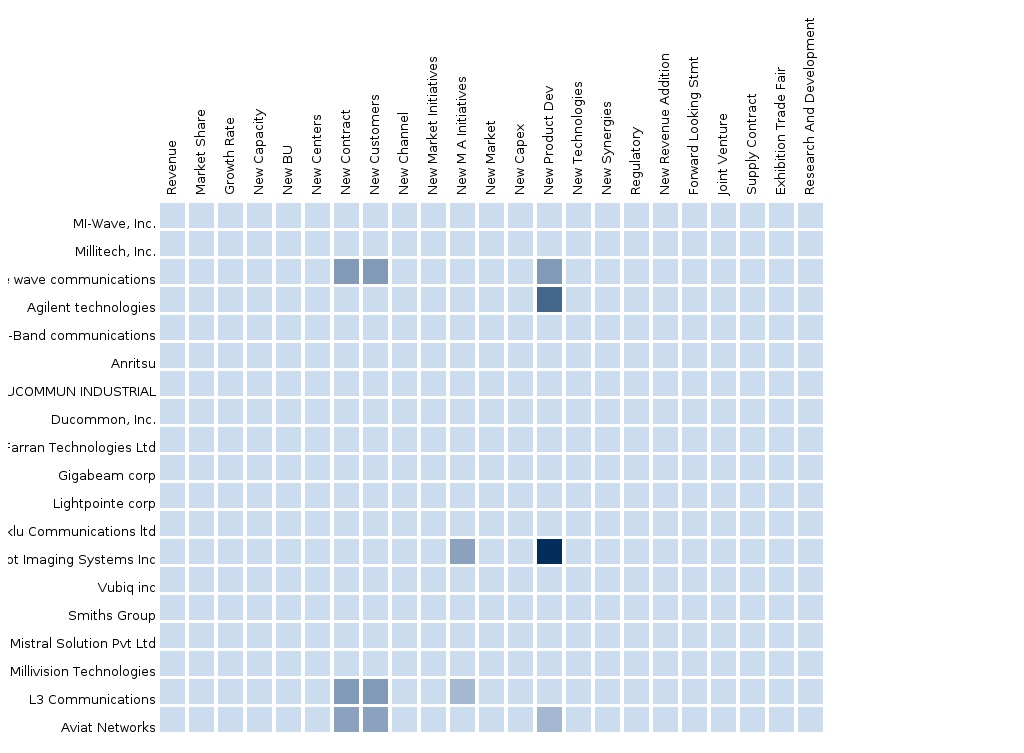Extremely high frequency (EHF) is the highest band of radio waves, and operates at a frequency range of 20 GHz-300 GHz. The radio waves in this band have wavelengths that are in the range 10 mm to 1mm, therefore, the waves in this band are called as millimeter waves (mmW). In wireless communications, frequency is a major factor that ascertains the feasibility of the technology. Millimeter wave technology operates in an unregulated bandwidth that is available world-wide, with better efficiency than traditional wireless LAN frequencies such as 2.5 GHz or 5 GHz. The mmW technology has many applications in imaging, telecommunications, home networking, satellite communication, construction & manufacturing, among others, due to its unique features.
The value of the millimeter wave technology market in Germany is estimated to reach $15.6 million by the end of 2014, and is expected to grow to $95 million by 2018, at a CAGR of 60.3%. Germany is a key market for millimeter wave technology, mainly in the telecommunications sector. The 80 GHz millimeter wave solutions, used for macrocell-backhaul, are also gaining popularity in this region.
This report also looks into the whole value chain of the market. It also focuses on the parent markets and the sub-markets of this industry, thus identifying the total potential market that can be tapped by millimeter wave technology.
The report is based on an extensive research study of the market and the related frequency ranges, frequency band licenses, and product industries. It is aimed at identifying the entire market, specifically the mmW products and mmW components in all the applications excluding consumer electronic applications. The report covers the overall market and sub-segment markets through extensively detailed classifications, in terms of both revenue and shipments.
Report Options:
The market segmentation detailed in the report is as given below:
By Products:
- MM scanners and imaging systems (active and passive), MM RADAR and satellite communication systems, perimeter and surveillance RADAR, application-specific RADAR, satellite systems, MM telecommunication equipment, mobile back-haul equipment, sub-segments such as small-cell and macro-cell, Pico-cell and Femtocell, enterprise, and other networking equipment
By Application Areas:
- Mobile and telecommunication, consumer & commercial, healthcare, industrial, automotive & transportation, military, defense & aerospace, and other emerging and next-generation applications
By Frequency:
- 8 GHz to 43 GHz Frequency Millimeter wave – sub-segments – 23 GHz-38 GHz Band, 38 GHz-43 GHz Band; 43 GHz to 80 GHz Frequency Millimeter wave – sub-segments - 57 GHz-64 GHz Band, 71 GHz-76 GHz Band; 80 GHz -300 GHz Frequency Millimeter wave - 81 GHz-86 GHz Band, 92 GHz-95 GHz Band
By Licensing Nature:
- Fully-licensed, light-licensed, and unlicensed frequency bands
Customization Options:
Along with the market data, customize the MMM assessments to meet your company’s specific needs. Customize to get a comprehensive summary of the industry standards and deep dive analysis of the following parameters:
Product Analysis
- In-depth trend analysis of products in competitive scenario
- Product matrix, which gives a detailed comparison of product portfolio of each company
- Product matrix, which gives a detailed comparison of product portfolio for mmW market along with the various applications they are used for
- A comprehensive coverage of regulations followed in the market
Data from mmW Firms
- Fast turn-around analysis of firms’ responses to market events and trends
- Various firms’ opinions about different products and applications from different companies
- Qualitative inputs on macro-economic indicators and mergers & acquisitions
- In-depth analysis of the market for different frequency ranges and band licenses in the mmW market
Shipment/ Volume Data
- Tracking the value of components shipped annually
- Tracking the quantitative inputs of mmW applications
Trend Analysis of Applications
- Application matrix, which gives a detailed comparison of application portfolio of each company
- Application matrix, which gives a detailed comparison of application portfolio for mmW market along with the various products they are used for
- Application matrix, which gives a detailed comparison of application portfolio for mmW market along with frequency range and band licenses
Frequency Range & Band Licenses Analysis
- Frequency range matrix, which gives a detailed comparison of frequency range portfolio and frequency band licenses on the basis of different products they are used in

Please fill in the form below to receive a free copy of the Summary of this Report
Please visit http://www.micromarketmonitor.com/custom-research-services.html to specify your custom Research Requirement














